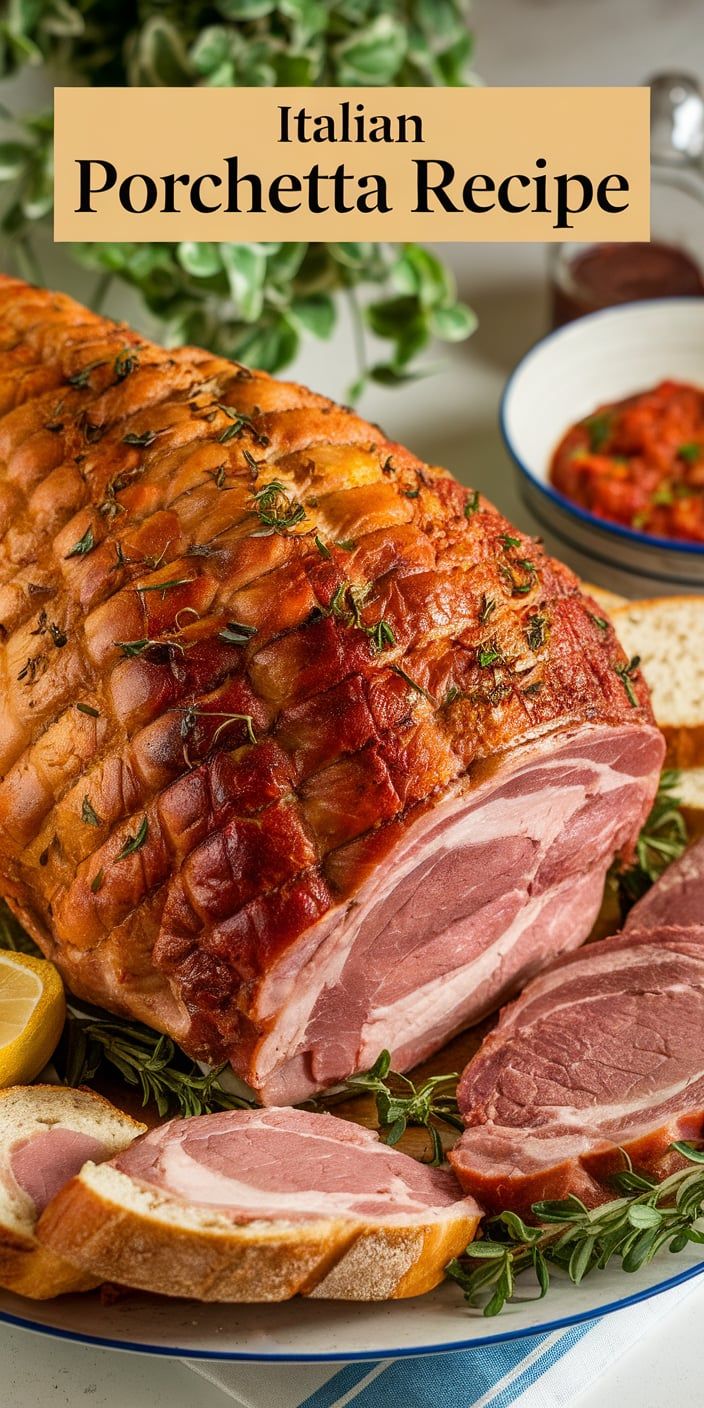Dive into the world of authentic Italian cuisine with this incredible Italian Porchetta Recipe that brings the rich flavors of Tuscany directly to your kitchen. A Tuscan-style pork roast that has captivated food lovers for generations, porchetta represents the heart of traditional Italian cooking with its remarkable blend of herbs, spices, and perfectly roasted meat.
Prepare to embark on a culinary journey that transforms a simple pork roast into a masterpiece of flavor and texture. This authentic Italian cuisine staple promises a crispy exterior and a tender, herb-infused interior that will transport your taste buds straight to the rolling hills of Italy.
Key Takeaways
- Discover the authentic technique behind traditional porchetta
- Learn how to create a restaurant-quality Tuscan-style pork roast at home
- Explore the rich culinary heritage of Italian meat preparation
- Master the art of herb and spice combinations
- Understand the cultural significance of porchetta in Italian cuisine

Understanding Traditional Italian Porchetta
Porchetta represents a culinary treasure deeply rooted in Italian gastronomic tradition. This succulent Italian pork dish history stretches back centuries, embodying the rich cultural heritage of rural Italian cooking. Originating in central Italy, traditional Porchetta has transformed from a simple peasant meal to a celebrated national delicacy.
The journey of Porchetta begins in the rustic kitchens of small Italian towns, where local cooks perfected the art of preparing whole roasted pork. Its popularity spread across different regions, each developing unique approaches to this beloved dish.
Origins in Italian Culinary Culture
Porchetta’s roots can be traced to central Italian regions like Lazio and Umbria. Rural communities developed this cooking method as a way to utilize entire pig cuts, ensuring no part went to waste. The preparation became a communal event, bringing families and neighbors together during festivals and special occasions.
Regional Porchetta Variations
- Tuscany: Emphasizes herb-infused seasoning
- Lazio: Uses more intense garlic and rosemary profiles
- Umbria: Incorporates wild fennel seeds
- Abruzzo: Adds local mountain spices
Essential Equipment and Preparation
Creating authentic Porchetta requires specific tools and patience. Home cooks will need:
- Large roasting pan
- Sharp butcher’s knife
- Kitchen twine
- Meat thermometer
Preparation typically takes 6-8 hours, including marinating and slow roasting, making it a labor of love for dedicated culinary enthusiasts.
*”Porchetta is more than a dish—it’s a celebration of Italian culinary tradition.”*
Italian Porchetta Recipe: Step-by-Step Instructions
Mastering the art of Porchetta requires precision and passion. This Italian pork roast technique combines rich flavors and traditional cooking methods to create a spectacular centerpiece for any meal.
Ingredients for Authentic Porchetta
- 5-6 pound pork belly with skin attached
- 3 tablespoons fresh rosemary, finely chopped
- 4 garlic cloves, minced
- 2 tablespoons fennel seeds
- Sea salt and black pepper
- Extra virgin olive oil
Porchetta Recipe Steps
Creating the perfect Porchetta involves several critical steps. Begin by carefully preparing the pork belly, ensuring the skin is pristine and ready for seasoning.
- Butterfly the pork belly, creating an even surface for seasoning
- Mix rosemary, garlic, fennel seeds, salt, and pepper
- Spread herb mixture evenly across the meat’s interior
- Tightly roll the pork belly, creating a compact roast
- Secure with kitchen twine at 1-inch intervals
When learning how to make Porchetta, the key is achieving a crispy exterior while maintaining a juicy interior. Pat the skin dry and rub generously with salt to encourage crackling.
Cooking Technique
Roast the Porchetta at 325°F for approximately 3 hours. Pro tip: Use a meat thermometer to ensure the internal temperature reaches 145°F for perfect doneness.
Let the roast rest for 20 minutes before slicing to retain maximum juiciness. Serve warm and enjoy this classic Italian culinary masterpiece!
Conclusion
Your journey to creating the perfect Porchetta is a delightful exploration of authentic Italian cuisine. This Tuscan-style pork dish represents more than just a recipe—it’s a celebration of culinary tradition that transforms a simple cut of meat into a spectacular centerpiece for any gathering.
When serving your Italian roast pork, consider classic accompaniments like roasted potatoes, seasonal vegetables, or a crisp green salad. The crackling skin and tender meat create an impressive dining experience that will transport your guests straight to the rolling hills of Tuscany. Experimenting with herb combinations and regional techniques can help you develop your own signature approach to this beloved dish.
Home cooks should embrace the process with patience and passion. Each Porchetta tells a unique story, connecting you to generations of Italian culinary artisans who have perfected this remarkable recipe. Whether you’re preparing it for a family dinner or a special occasion, your homemade Porchetta represents a beautiful blend of technique, tradition, and personal creativity.
Remember that cooking is an adventure. Don’t be afraid to make this recipe your own while respecting its core techniques. Share your culinary creation with loved ones, and enjoy the rich flavors and cultural heritage wrapped within each delicious slice.
